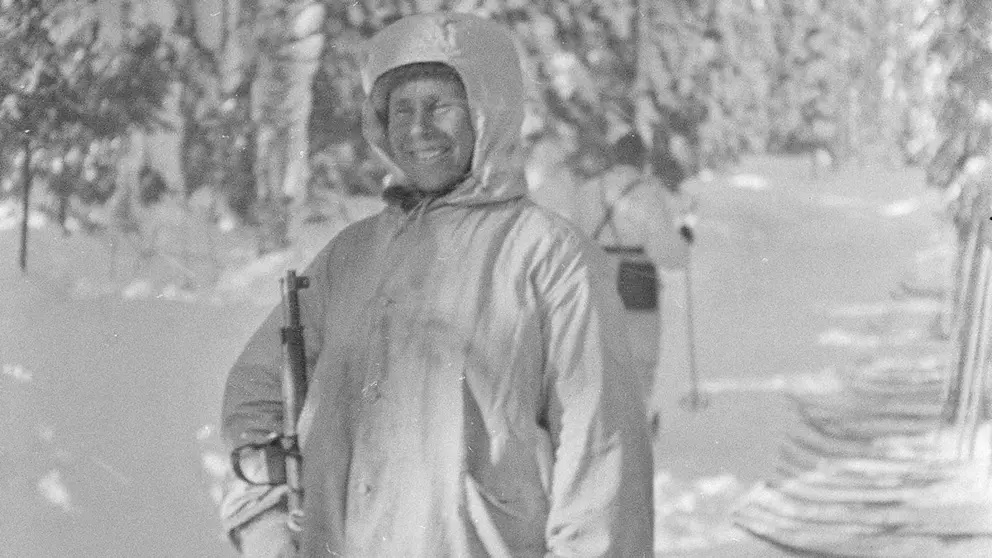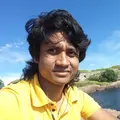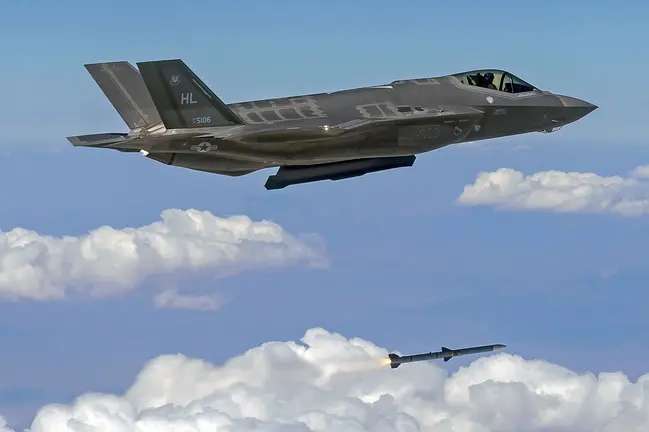He was unpretentious. He talked less and did more. He led an ordinary life. On all counts, he was an average Finn. Farming was his profession. He also had hobbies – skiing, shooting and hunting. Yet, when the enemies from the other side of the border invaded his country, he picked up the rifle, aimed and gunned them down.
Little did he know at the time that he would go down in history as one of the world’s most accomplished sharpshooters.
No one in history has ever been credited with more confirmed sniper kills than Simo Häyhä. He not only fought tactfully for his country against the Soviets in the 1939-40 Winter War. He also established the image of a seemingly invincible marksman, who moved like a phantom in the white snowy Finnish forests and shot down enemies whenever they could be targeted.
The Soviets feared Simo, so much so that they nicknamed him 'The White Death'.
By the numbers
Simo not only took down the Soviet troops skillfully but also achieved an enviable number of kills in a short period of time.
Although he served in the war for less than 100 days, the formidable sniper was able to kill over 500 enemies. This is said to be the highest number of confirmed sniper kills in any major war so far.
On average, he shot down five Soviet soldiers per day. His highest was a staggering 25 kills in just one day, more than the size of two football teams. Antti Rantama, who was the captain of his unit, credited him with 259 confirmed kills by sniper rifle and an equal number of kills with a sub machine gun.
The making of a sharpshooter
Although Simo did the one-year mandatory military service in the Finnish army, hunting wild animals –especially in extreme winter conditions– helped him hone his shooting skills to an enormous degree.
He lived close to nature. He had vast knowledge of how to avoid being detected by targets when moving in the forests.
“He hunted birds in clearings and pine forests, and some of the birds were extremely sensitive to even the slightest sound, reflection or sudden movement,” wrote Tapio Saarelainen, author of The White Sniper: Simo Häyhä.
He was a man of action. He was adept, and his aim was deadly. He also won trophies in local shooting competitions. His father taught him a valuable skill: how to estimate distances. And through much practice, Simo mastered this.
He also learned to estimate the effects of wind and rain on shooting and forest conditions.
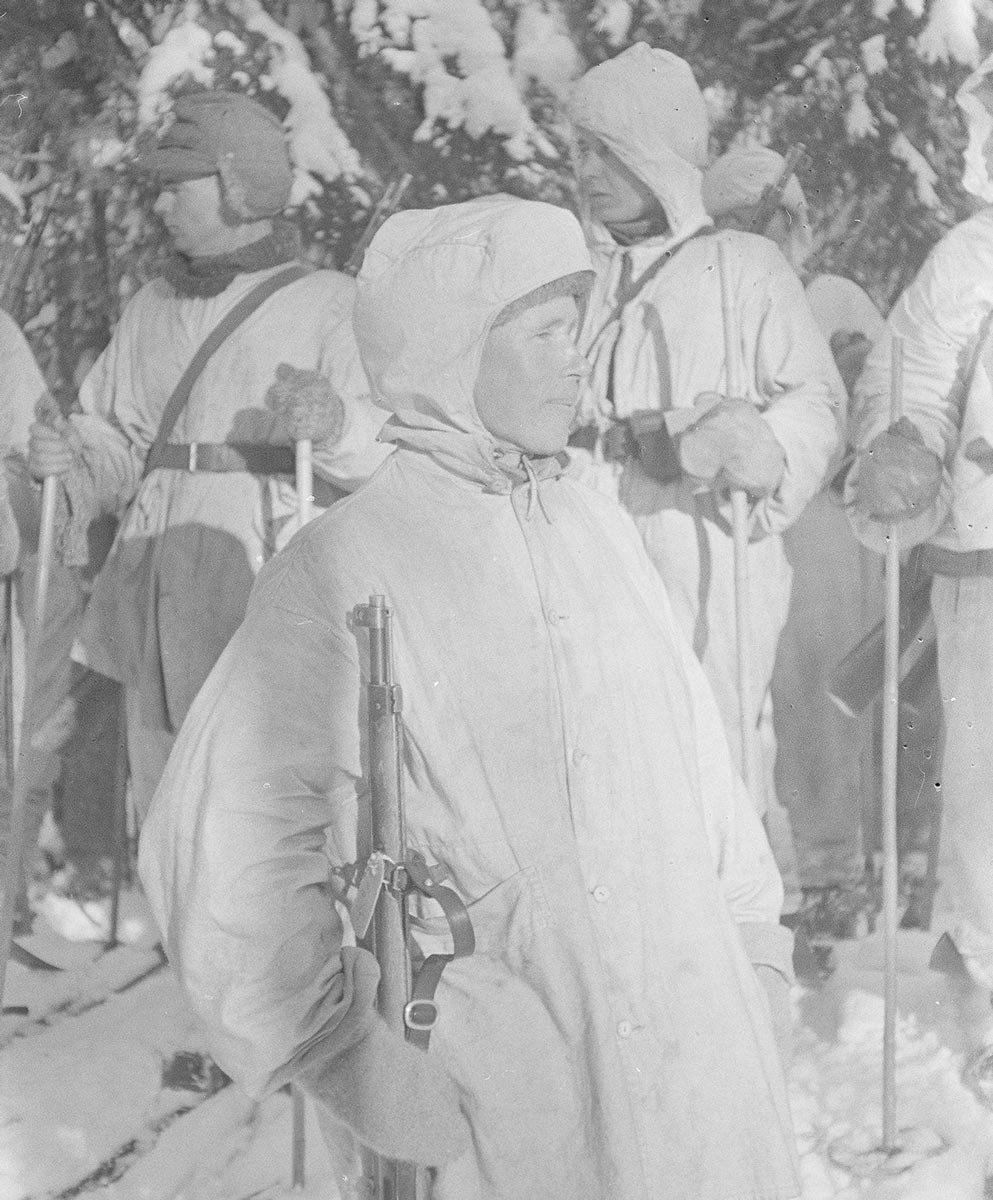
Smart tactics
Although Simo was only five feet tall, his shortness worked in his favour because hiding himself from the enemies was very important for him as a sniper.
Dressed in white camouflage, he always tried to devise ways to stay hidden and dodge the enemy. He would pour water into the snow in front of him to prevent the muzzle blast from exposing his location.
He used an iron sight instead of a telescopic sight because the latter was more likely to reveal his position. He learned the art of using sound, smoke and cannon fire to cover his movements when altering positions.
The tiny sniper, however, was against the idea of sniping from trees, arguing that he would have no way to escape if spotted by the enemy.
The White Death
Despite his marksmanship skills, Simo’s job was challenging. He operated in adverse weather conditions in winter. Days were short, the temperature was freezing, and light was inadequate to take perfect sniper shots.
Still, he was taking down enemies with his M/28-30 rifle, a very basic weapon, with incredible precision. He remained untouched, uncaptured.
It was not long before the Soviets learned about him. He became one of their primary targets. They named him 'The White Death' and rolled up their sleeves to eliminate this unstoppable killing machine.
They made several attempts by resorting to indirect fire, mortar bombardment, and artillery shell. Simo survived the artillery shell attack with a minor scratch on his back and a damaged greatcoat.
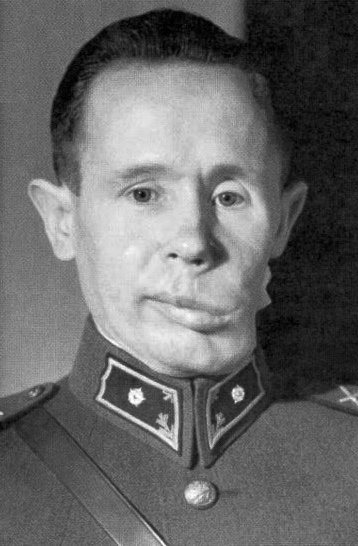 On 6 March, 1940, a Soviet solider finally succeeded in injuring Simo with an explosive bullet, which hit him in his lower left jaw, leaving him in a coma. He regained consciousness a week later, on the day the war ended after the signing of the armistice.
On 6 March, 1940, a Soviet solider finally succeeded in injuring Simo with an explosive bullet, which hit him in his lower left jaw, leaving him in a coma. He regained consciousness a week later, on the day the war ended after the signing of the armistice.
He could have died, but finally survived against all odds. The bullet injury left him permanently disfigured.
Back to the past
After the war, Simo was promoted from Corporal to Second Lieutenant by Marshal Mannerheim in recognition of his contribution to the defence of his motherland.
Although he became something of a celebrity, he returned to his farm to live a low-key life in the vicinity of Finnish forests.
He preferred living alone. His friend Kalevi Ikonen said he spoke more with animals in the forest than with other people. He also became a successful moose hunter and even hunted with President Urho Kekkonen.
During the twilight of his life, he lived in the Kymi Institute for Disabled Veterans where he died at the age of 96 in 2002.
Hunting in the Finnish forests helped Simo unknowingly acquire outstanding marksmanship skills. Sniping at the Soviets during the Winter War made him a world legend.
*Pictures included in this article by S-A Kuva/Finnish Military Archive.
*NOTE: This article is the fifth of an 8-part series on the Winter War to be published from 30 November (the day the conflict started) til 13 March (when it ended). Next: 'The tears of Winter War peace treaty' coming out on 30 January.







